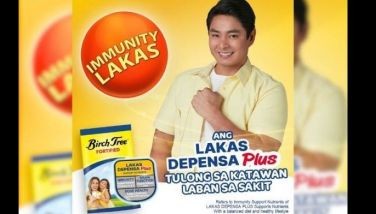Abuse of fair use

The digital age has made copyright infringement widespread. Unfortunately, many of those who have committed it don’t even know that what they are doing is illegal.
But in a case decided by the Supreme Court in 2015 (ABS-CBN vs Gozon), it said that intent to commit is not an element of copyright infringement since infringement under the Intellectual Property Code is generally malum prohibitum, the IPC being a special law. The general rule is that acts punished under a special law are malum prohibitum. An act which is declared malum prohibitum, malice or criminal intent is completely immaterial, the High Tribunal explained.
The Intellectual Property Code (IPC), the court held, requires strict liability for copyright infringement whether for a civil action or a criminal prosecution and does not require mens rea or culpa, mens rea meaning “the nonphysical element which, combined with the act of the accused, makes up the crime charged. Most frequently, it is the criminal intent or the guilty mind.
To cut the long story short, it is not a defense in copyright infringement that the infringer did not know that the work being used is covered by copyright or that the infringer’s use constitutes copyright infringement.
One of the most abused excuse or defense in copyright infringement is the so-called “fair use.”
Fair use has been defined by the court as a privilege to use the copyrighted material in a reasonable manner without the consent of the copyright owner or as copying the theme or ideas rather than their exception. It is one of the limitations to a copyright owner’s exclusive use of his or her work.
We often see pictures or articles posted on social media that were copied or borrowed without the permission or consent of the author of the work. What they do is just put the words “consistent with fair use,” especially if the use is non-commercial or for personal use. If one is doing a cover song of a work done by another artist and is posted on TikTok for entertainment purposes, is getting the permission of the artist needed or will this constitute fair use? How about a restaurant that is playing music on the radio for their customers’ listening pleasure? Will that constitute fair use if the restaurant owner is not charging additional for the music being played?
To end the confusion once and for all, the Intellectual Property Office of the Philippines or IPOPhl released its guidelines on statutory fair use to provide awareness and clarity of the principles on limitations on copyright under the IP Code.
The general principle of fair use is contained in Section 185 of the IP Code. It says that the fair use of a copyrighted work for criticism, comment, news reporting, teaching including limited number of copies for classroom use, scholarship, research, and similar purposes is not an infringement of copyright.
In determining whether the use made of a work in any particular case is fair use, the factors to be considered shall include: first, the purpose and character of the use, including whether such use if of a commercial nature or is for non-profit education purposes; second, the nature of the copyrighted work; third, the amount and substantiality of the portion used; and fourth, the effect of the use upon the potential market for or value of the copyrighted work.
But there are also the so-called statutory fair uses or acts that limit copyright protection as mentioned in Section 184 of the IP Code that no longer require the further application of the general fair use principles under Sec. 185. These include private recitation or performance of a work, reproduction or communication to the public by mass media, recordings made in educational institutions, ephemeral recordings, public display, use in judicial proceedings or by a legal practitioner, and specialized reproduction for the visually impaired, among others.
The second part of the guidelines tackled fair use under Sec.184 which require application of the four general fair use principles. These include quotations from a published work, illustrations for teaching purposes, use by the government, or by educational, scientific or professional institutions.
The third part mentioned other specific statutory limitations on copyright found in Sec. 186-189, such as work of architecture, private reproduction, etc.
According to IPOPhl, if one is in doubt if the use constitutes fair use, err on the side of caution and obtain permission.
We can also not rely on so-called automated copyright protection services by tech companies like YouTube’s content filtering tools which oftentimes wrongly take down even legitimate fair uses.
To be sure, follow the general fair use guidelines. If using the copyrighted work without the permission of the author is not for criticism, comment, news reporting, teaching including limited number of copies for classroom use, scholarship, research, and similar purposes, then more likely than not, it is not fair use.
By the way, in a recent case decided by the SC, it held that the act of the restaurant owner of playing radio broadcasts containing copyrighted music to its customers without the permission of the and without paying royalties to the copyright owner amounts to an unauthorized communication of such copyrighted work to the public as well as to a public performance, which is an exclusive economic right of the copyright owner. In this case only the radio broadcasting station had permission from the owner to play the music. The act of playing radio broadcasts is a separate performance by itself requiring separate consent of the copyright owner.
For comments, e-mail at mareyes@philstarmedia.com
- Latest
- Trending

























